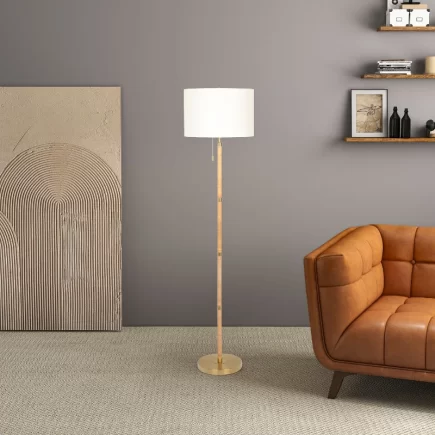Dining chairs do more than provide a place to sit. They complete the look of your dining area, add personality to your space, and support years of meals and memories. But if your chairs look tired or outdated, painting them can be a cost-effective way to refresh their style.

Whether you’re revamping a thrift store find or modernizing your current set, painting dining chairs is a satisfying DIY project that lets you add color, texture, and character to your space. This tutorial is crafted especially for homeowners and DIY enthusiasts who value quality, style, and long-term durability.
Tools and Materials You’ll Need
Before getting started, gather all the essential tools and materials. Having everything ready will make the process smoother and more enjoyable.
| Tool/Material | Purpose |
| Screwdriver | Remove seat cushions or hardware |
| Microfiber cloth | Clean and dust surfaces before painting |
| Mild soap or degreaser | Remove sticky residue or grease |
| Sandpaper (80 & 220 grit) | Scuff and smooth surfaces |
| Tack cloth | Wipe away sanding dust |
| Primer (shellac-based) | Helps paint adhere and blocks stains |
| Paint (alkyd enamel or chalk) | Provides color and coverage |
| Paint sprayer or brushes | Applies paint evenly |
Step 1: Remove Cushions or Hardware
Remove Seat Cushion
If your chair has a removable cushion, flip the chair over and unscrew it using a basic screwdriver. Keep the cushion aside for reupholstering or repainting later.

Step 2: Clean the Chairs Thoroughly
Dust the Surface
To clean fabric dining chairs effectively, start by wiping down the entire chair with a dry microfiber cloth to remove loose dust, cobwebs, and debris. This step helps clear the surface before moving on to deeper cleaning methods, ensuring a thorough clean and preserving the fabric’s integrity.
Wash with Soap Solution
Mix mild dish soap with warm water and wipe the chair thoroughly using a damp cloth or sponge. Focus on arms, rungs, and corners where grease and hand oils collect.
Remove Grease or Stickiness
For sticky or oily spots, use a degreaser like TSP. Apply it with a sponge, then wipe clean with a damp cloth. This ensures proper paint adhesion later.
Helpful Tip: Let chairs dry fully before the next step to avoid gumming up your sandpaper.
Step 3: Light Sanding for Smooth Finish
Use 80-grit sandpaper to scuff up the surface. This helps the primer bond better to the existing finish. Focus on curved areas, spindles, and the underside.
After sanding, wipe all surfaces with a tack cloth or damp microfiber cloth to remove dust.
Optional: Use wood filler to patch any dents or cracks. Once dry, sand flush with the surface.

Step 4: Apply Primer for Adhesion and Colour Block
Apply a thin, even coat of shellac-based primer. This step is especially important if your chairs are dark wood, stained, or have knots. It blocks stains and helps your paint adhere better.
Allow the primer to dry completely (usually 45–60 minutes) and lightly sand with 220-grit sandpaper for a smooth finish. Wipe off dust before proceeding.
Step 5: Painting Technique: Brush, Roller, or Spray?
Choose your application method based on your skill level and tools available:
Using a Paint Sprayer
Paint sprayers are perfect for achieving full coverage on chairs with curves, spindles, or carved details. They deliver a professional, smooth finish but do require setup space and prep work to avoid overspray.
Using a Paint Roller
A roller is ideal for painting large, flat surfaces like seat bases or chair backs. It provides fast, even coverage and a smooth finish. Just note it may miss narrow crevices or spindles.
Using a Paint Brush
A brush works best for small jobs or detailed areas like corners or decorative edges. It offers great control and requires minimal setup. However, if not applied carefully, brush strokes may be visible.

Step 6: Apply Multiple Thin Coats (Let Each Dry)
Don’t rush with thick paint layers. Instead, apply 2 to 3 thin coats, allowing each coat to dry thoroughly before the next. Refer to your paint can for dry time guidance (usually 4–8 hours).
Start with chairs upside down, then flip right-side up after each coat dries. This ensures full coverage in hard-to-reach areas.
Tip: Sand lightly between coats with 220-grit sandpaper for an ultra-smooth finish.
Step 7: Optional: Add Protective Topcoat
While some high-quality paints include a built-in topcoat, adding a clear finish like polyurethane or polycrylic provides added durability, especially for chairs used daily.
| Sealant Type | Finish | Application | Best For |
| Water-Based Poly | Satin/Semi | Brush-on or spray | Low odor, fast dry, indoor use |
| Wax | Matte | Buff-on | Chalk paint finishes |
| Oil-Based Poly | Glossy | Brush-on | High traffic areas, long wear |
Helpful Tip: Apply two thin coats of sealant for the best results.
Step 8: Reattach Cushions or Hardware
Once the paint is fully cured, reattach any cushions, screws, or hardware. If you’re also reupholstering, now is the time to wrap new foam and fabric on the seat base.

Tips to Avoid Common Painting Mistakes
Here are some practical tips to help you avoid common errors during your DIY painting project:
- Skipping cleaning: Always take the time to clean all chair surfaces thoroughly to remove oils, dust, and residue that could prevent paint from adhering properly.
- Using thick paint layers: Applying thin coats helps prevent drips and results in a smoother, more professional-looking finish.
- Not sanding between coats: A quick light sanding enhances adhesion and improves the overall finish.
- Painting in humid weather: Moisture in the air can slow down drying and cause uneven coverage. Choose dry, well-ventilated conditions.
- Rushing cure time: Even if the paint feels dry to the touch, it needs several days to fully harden for long-term durability and resistance to chips or scratches.
Painting Dining Chairs is a project that combines creativity with functionality. With the right tools, patience, and technique, you can achieve a long-lasting, showroom-quality finish that revitalizes your dining space. Whether you’re restoring vintage finds or breathing new life into your existing set, this step-by-step guide ensures you get it right the first time.
FAQs
1. How do I keep dining chair legs from sticking to the floor after painting?
Place felt pads, coasters, or even scrap cardboard under the legs until the paint has fully cured. This prevents peeling or floor damage. Once dry, you can safely remove the pads and enjoy a smooth finish.
2. How can I stop paint from dripping on dining chair spindles?
Apply thin coats with a small angled brush for better control. Flip the chair upside down to cover tricky spots. Always catch drips immediately with a dry brush.
3. What if my dining chair has water rings or old stains before painting?
Lightly sand the area to smooth the surface, then apply a stain-blocking primer. This seals the mark and ensures your new paint finish stays clean.





























